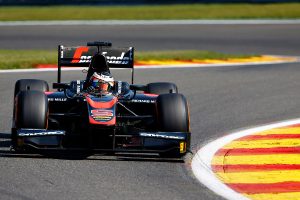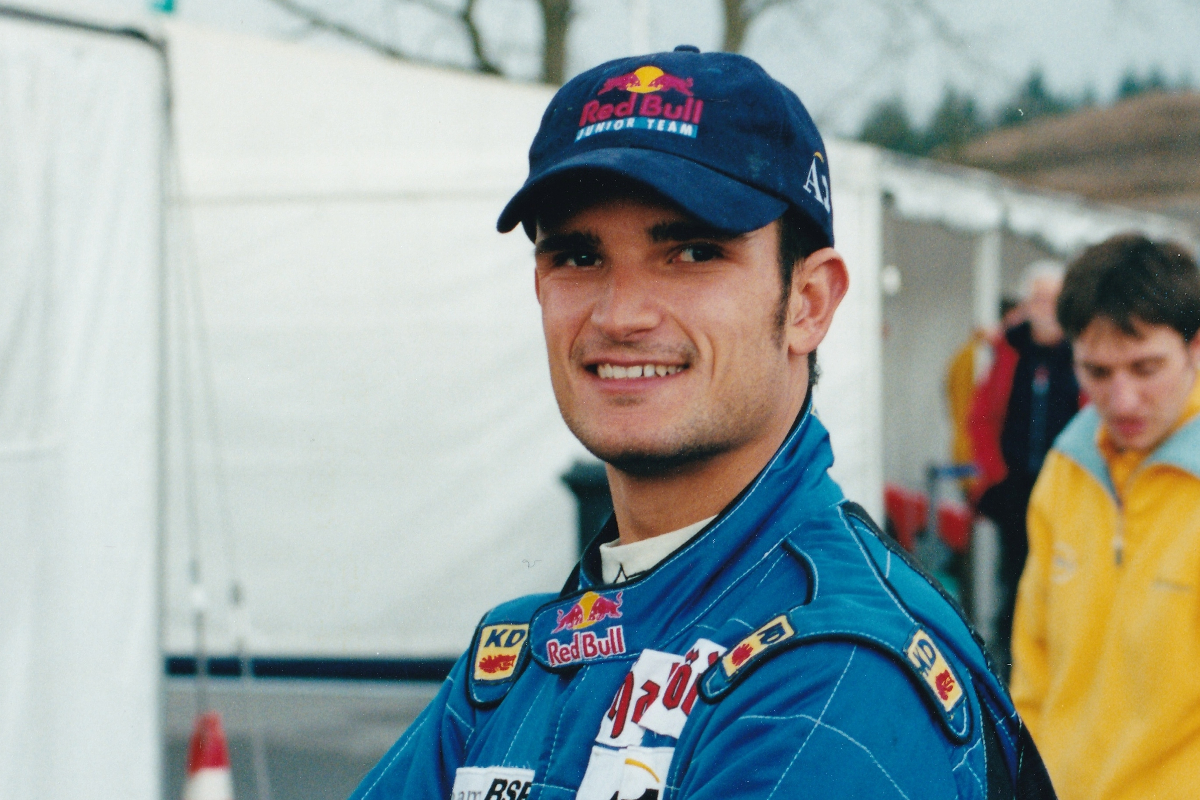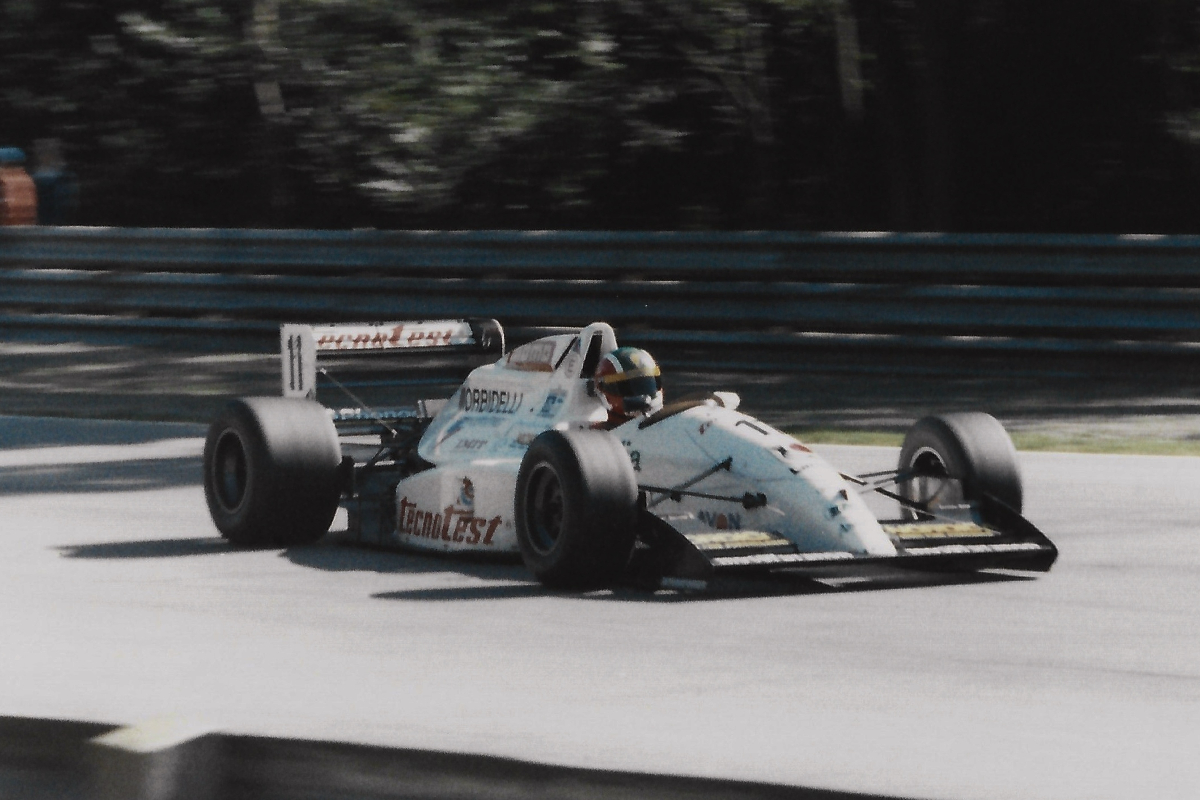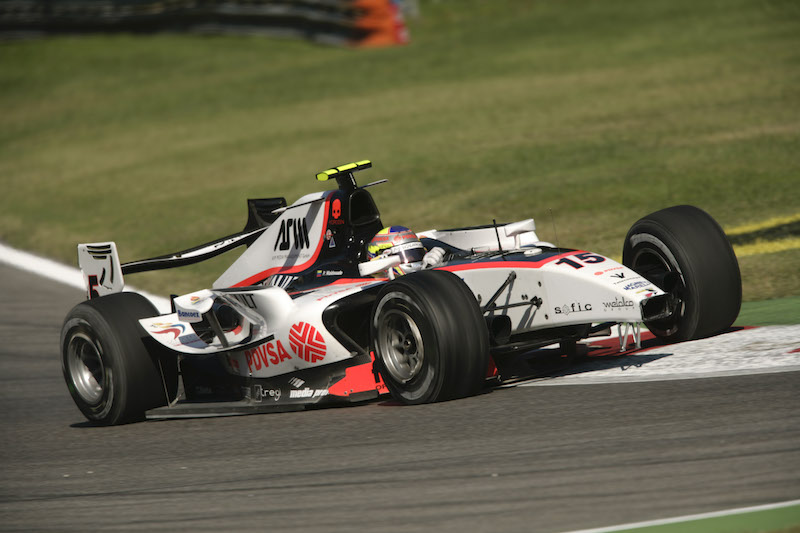
Photos: Roger Gascoigne
Much has been written about Oscar Piastri’s 2021, earning a third successive junior single-seater title by becoming F2 champion as a rookie and with six wins. But his five poles in a row was what really set him apart
Alpine (and McLaren) Formula 1 reserve driver Oscar Piastri can look back at 2021 with pride, and what he achieved in a highly competitive field was without doubt impressive. It more than justified a graduation to an F1 seat, something which might occur this weekend, but his qualifying achievements were not unique in the history of F1’s premier feeder series.
Piastri put it on pole at Silverstone, Monza, Sochi, Jeddah and Yas Marina Circuit in succession last year, and converted all but the first of those into wins.
A look back through the records does provide some comfort to Piastri, as all the drivers who had similar periods of uninterrupted success have progressed to F1. However, dominance over one lap in F2 (or its predecessors European F2, International Formula 3000 and GP2) offers no guarantee of success at a higher level, as only two drivers as consistent in qualifying as Piastri became grand prix winners.
The list of drivers who have been able to rack up consecutive poles doesn’t include too many F1 heavyweights, nor does the list of drivers who racked up main race victories in European F2, were on top weekend-in, weekend-out in F3000 or always got the job done in feature races in GP2. Of course when GP2 was created, reversed-grid sprint races arrived with it and those are not considered in this tally – not the heat races or individual legs of the main races in European F2 events.

Photo: Formula Motorsport Limited
Bruno Giacomelli ITALY 1978 European F2
5 poles Mugello, Vallelunga, Rouen, Donington, Nogaro 4 wins Nogaro, Enna, Misano, Hockenheim
In 1978 Bruno Giacomelli matched Piastri’s run with four wins and five poles in succession, though interestingly not at exactly the same events.
The works March-BMW driver actually concluded the 1977 season with victory from pole at Donington Park in a prototype-spec car, then kicked off ’78 by doing the same at Thruxton and Hockenheim. An electrical issue that caused an engine misfire prevented him from turning his fourth pole in a row into victory in the iconic Eifelrennen race on the Nurburgring Nordschleife, and in Pau the Hart-powered March of Brian Henton was able to outqualify him by 0.41 seconds to take pole. Chevron’s Patrick Tambay also slipped ahead by 0.020s, putting Giacomelli third on the grid.
It didn’t hurt him too much, as he won the Pau Grand Prix by a big margin once leader Tambay’s engine expired on the last lap, but had he topped qualifying on the French streets then he would have had 10 poles in a row after what followed.
Pole went to Giacomelli in all five of the next rounds, although it was only the French rounds at Rouen and Nogaro where he was able to turn those into victories. At Mugello he was passed for the lead on lap one by Derek Daly, then at Vallelunga it was on the last lap as he ran into engine trouble again. At Donington meanwhile it was a crash that ended his victory hopes.
He didn’t take pole in any of the last three rounds, but did comfortably win each to complete a dominant season with a four-race winning streak. Giacomelli got to race in F1 with McLaren on occassion on the side, but his career at the top level didn’t flourish even when he was a Alfa Romeo driver for three years. There was one podium, and he got a top-five in IndyCar too.
Ronnie Peterson SWEDEN 1971 European F2
5 poles Jarama, Crystal Palace, Rouen, Mantorp Park, Tulln-Langenlebarn
 Another works March driver, another dominant title campaign and another five-round run of poles. Even more similarly, Peterson started his vein of form with pole in the previous year’s finale.
Another works March driver, another dominant title campaign and another five-round run of poles. Even more similarly, Peterson started his vein of form with pole in the previous year’s finale.
The 27-year-old was only beaten once in qualifying through the first eight rounds of 1971, and he was only eight tenths of a second off pole around the fiersome 22.8 kilometres of the Nordschleife. He crashed out halfway through the race, and engine issues forcing him out of the race at Jarama meant his first win didn’t actually come until the season’s second half.
But three victories in a row at Rouen, Mantorp Park and Austria’s Tulln-Langenlebarn airfield track put him in a healthy points lead, and after being beaten to pole a 0.1s and finishing a lapped sixth at Albi he responded with victory at Vallelunga. He was denied pole by 0.23s there, but it didn’t matter as he’d done enough to skip the final round at the circuit a week later and still be crowned champion.
That same year Peterson was remarkably F1 runner-up, in his first full season, and after moving to Lotus in 1973 he earned his first world championship wins but never becane champion.
Charles Leclerc MONACO 2017 F2
6 poles Bahrain, Barcelona, Monaco, Baku, Red Bull Ring, Silverstone

Photo: Zak Mauger/FIA Formula 2
Leclerc graduated to F2 with Prema in 2017 as reigning GP3 champion. Despite being a rookie he dominated from the start, taking until the seventh round for him to be beaten in qualifying. But Leclerc was actually the fastest qualifier in round seven at the Hungaroring.
He had pole taken away from him due to an illegal brass shim in his differential. Normal service was resumed at Spa-Francorchamps, as Leclerc was on pole again. So it was actually round nine at Monza where Leclerc was finally beaten.
And so for good measure, he added an eighth pole in the penultimate round at Jerez.
Leclerc also took seven victories, five of them in feature races, although his longest uninterrupted run was only three.
At his home race in Monaco he lost a comfortable lead due to a safety car mix-up, then suspension damage terminated his race early. Without that misfortune, he would almost certainly have scored five successive feature race wins.
He lost a further feature race win at Spa to an excessively worn skid block, which meant an instant disqualification, but despite those lost points he had a 72-point title-winning margin. More than a third of that gap came from points for poles.
The Ferrari junior graduated to F1 with Sauber, then was in a Ferrari car by 2019 as he replaced Kimi Raikkonen as team-mate to Sebastian Vettel. A first pole was claimed in his second race with the team at Bahrain, but engine issues left him with a maiden podium rather than a win. He was able to delight the tifosi later in the year with back-to-back wins at Spa and Monza, but hasn’t won since as Ferrari had an awful 2020. Leclerc is still seen by many observers as a champion-in-waiting.
Stoffel Vandoorne BELGIUM 2014-’15 GP2
6 poles Spa, Monza, Sochi, Yas Marina, Bahrain, Barcelona 5 wins Yas Marina, Bahrain, Barcelona, Monaco, Red Bull Ring

Photo: Sam Bloxham/GP2 Media Service
Vandoorne is the only driver on the list to have achieved his run of poles and wins across two years. The 2014 GP2 runner-up dominated 2015, and in 22 feature races over the two years he made the podium 17 times and won 10 times.
He won what is now French Formula 4, and was Formula Renault Eurocup champion too before being signed as a McLaren junior for his step up to in FR3.5. He was runner-up to fellow McLaren junior Kevin Magnussen, so moved sideways to GP2.
Vandoorne won first time out at Bahrain with ART Grand Prix, and was the in-form driver of the season’s final third as he took pole four poles in a row. He added to his Bahrain win with feature race success at Monza and Yas Marina too.
The dominant streak continued into 2015, as the first four feature races all went to Vandoorne and poles in the first two rounds took his unbeaten qualifying run to six. There was no question of who would be champion that year.
But with no full-time F1 seat available, Vandoorne moved to Super Formula for 2017 and was the top Honda-powered driver with two wins. He also scored a point on his F1 debut as a substitute for Fernando Alonso, then partnered him at McLaren through 2017 and ’18. Two seventh places were the highlight before he was replaced and found a new home in Formula E.
He has two wins there and was 2019-20 runner-up for Mercedes-EQ, leading to him now being part of its F1 fold as reserve.
Vitantonio Liuzzi ITALY 2004 International F3000
8 poles Monaco, Nurburgring, Magny-Cours, Silverstone, Hockenheim, Hungaroring, Spa, Monza
 Nobody has ever come close to the overwhelming dominance of Liuzzi in the final season of International F3000.
Nobody has ever come close to the overwhelming dominance of Liuzzi in the final season of International F3000.
The series sophomore took an incredible nine pole positions out of 10, only missing out on a clean sweep by 0.29s courtesy of Enrico Toccacelo in round two at Barcelona.
Underlining his dominance, Liuzzi won seven races. However, as a result of Toccacelo’s victory in round four at the Nurburgring his run of successive wins is ‘just’ three. A tardy start and a collision-induced damaged wheel dropped him to 11th in Germany, marking the only time he did not finish first or second – his result at the Hungaroring and Spa.
Expectations had been high when Liuzzi stepped up to single-seaters after a stellar karting career, including winning the 2001 World Karting Championship against the likes of Lewis Hamilton, Nico Rosberg and, famously, a guesting Michael Schumacher in the finale at Schumacher’s family-run track in Kerpen.
Liuzzi raced in FR2.0 Germany that year and came just short of the title as a car racing rookie, then stepped up to German Formula 3 in 2002 with Bertram Schafer’s works Opel team and Red Bull support. Error-prone and inconsistent, an awful season left him ninth in the standings, his only win of the year coming in a cameo appearance in Italy.
But Red Bull kept faith, aiding his graduation to International F3000 in 2003 with Scuderia Coloni, and he came fourth in the championship with a crushing pole at the Hungaroring. Red Bull saw enough to switch him to the reigning champion team Arden, then run by future Red Bull Racing boss Christian Horner, for what would be his dominant title season.
With the benefit of hindsight, it is fair to point out that the 2004 F3000 crop was not the strongest in the series’ history, but Liuzzi was virtually faultless in his execution.
A promised Sauber drive after didn’t materialize, and so he ended up in a shared seat at the new Red Bull Racing team. He scored on his debut, but only got four races and got put in Red Bull’s new second-line team Toro Rosso for 2006 and ’07, where the arrival of Sebastian Vettel quickly removed what remained of his lustre.
Liuzzi’s extrovert, partying persona had matched perfectly with the image Red Bull wished to project. Alas, his potential never came close to being fulfilled. He moved on to Force India, first as a test driver while winning in the Speedcar stock car series, then raced for HRT in 2011.
After F1 he was runner-up in the Superstars touring car series, raced prototype sportscars, came 16th in SF and raced in FE’s inaugural season. Now he’s a resauranter and F1 driver steward.
The rampant winners
Emanuele Naspetti ITALY 1991 International F3000
4 wins Enna, Hockenheim, Brands Hatch, Spa

Photo: Stephen Bounds
The only driver to have failed to win the title despite their run of dominance. The 1988 Italian F3 champion scored twice in his first two seasons in F3000, the latter campaign particularly poor as it was with reigning champion team Eddie Jordan Racing.
He moved back to his F3 team Forti Corse for his third crack at F3000 in 1991, but the choice of a Lola proved disastrous and after both he and team-mate Fabrizio Giovanardi failed to even qualify for round three at Jerez, Forti switched to Reynard chassis.
A crash in qualifying meant he missed the next race at Mugello, but, armed with a new chassis, took pole and victory (after Jean-Marc Gounon had been penalised for a jumped start) at Enna-Pergusa. And then Naspetti was unstoppable, winning the next three rounds.
The sudden dominance, particularly at high-speed venues, was regarded with suspicion. Rumours circulated of exotic fuel concoctions being supplied by Agip to certain teams.
Naspetti led the championship on win countback against Alex Zanardi going into the final two rounds at Le Mans and Nogaro, but struggled for pace on the twistier tracks and scored one point as Christian Fittipaldi swept to the title.
Naspetti returned for a fourth season, winning the Pau Grand Prix, before accepting an F1 drive with March for the final five races of 1992. He claimed a best finish of 11th, and a one-off with Jordan in 1993 was the end to his brief F1 sojourn. Four years later he was Italian Touring Car champion.
Mike Thackwell NEW ZEALAND 1984 European F2
4 wins Thruxton, Vallelunga, Mugello, Pau
 The now elusive Kiwi spent seven years racing in the rung below F1, and only ever contested two F1 races. When he had a dominant factory Ralt-Honda car at his disposal he was simply unstoppable in European F2, and quickly built on the two wins he had claimed from his first four seasons.
The now elusive Kiwi spent seven years racing in the rung below F1, and only ever contested two F1 races. When he had a dominant factory Ralt-Honda car at his disposal he was simply unstoppable in European F2, and quickly built on the two wins he had claimed from his first four seasons.
His 1984 campaign started with dominating the BRDC International Trophy at Silverstone, then he came second to rival and team-mate Roberto Moreno in the Deutschland Trophy.
Thackwell turned two poles into wins at Thruxton and Vallelunga, then was beaten to pole by a tenth at Mugello but dominated the race. Next was Pau, where qualifying is crucial, and Thackwell nailed it by 0.6s. The grand prix win was also his.
At Hockenheim he did claim pole, his sixth in F2, but finished ninth. The rivalry with Moreno looked to be at its closest when the paddock came to Misano as they matched each other to the hundredth of a second in qualifying but Moreno was awarded pole. Thackwell’s response was victory in the Adriatic Grand Prix by a full lap. A week later he claimed victory, pole and fastest lap in Enna-Pergusa’s Mediterranean Grand Prix.
The title was secured, and Thackwell scored three more points (and claimed another pole) in the remaining two rounds.
Jonathan Palmer ENGLAND 1983 European F2
5 wins Donington, Misano, Enna, Zolder, Mugello
 There were only four poles from 12 rounds for Palmer, now the owner and promoter of several circuits and series through his MotorSport Vision company, but with the same Ralt-Honda as Thackwell a year later he was able to win half of the races in 1983 and set a record for consecutive podium finishes in F1’s primary feeder series that only Thackwell has beaten since.
There were only four poles from 12 rounds for Palmer, now the owner and promoter of several circuits and series through his MotorSport Vision company, but with the same Ralt-Honda as Thackwell a year later he was able to win half of the races in 1983 and set a record for consecutive podium finishes in F1’s primary feeder series that only Thackwell has beaten since.
Thackwell was in fact Palmer’s team-mate, but his suprerior experience only helped Palmer to become a better driver.
A fuel system issue meant Palmer started his year with a retirement at Silverstone, then was third at Thruxton. He won at Hockenheim, and finished the Eifelrennen in a distant fourth but capping off what was still a strong start to the season. The 26-year-old wasn’t off the podium in the nine races after, with a second, third and a third at Vallelunga, Pau and Jarama preceding his five-race winning spree which stood as a record for a long time.
Palmer spent the next six years racing in F1, and also came second in the 1985 Le Mans 24 Hours.
Pastor Maldonado VENEZUELA 2010 GP2
6 feature race wins Istanbul, Valencia, Silverstone, Hockenheim, Hungaroring, Spa
 To many F1 fans, Maldonado has gone down as a crash-prone pay-driver who somehow managed to win a grand prix in a Williams in 2012, a season where it seemed possible that every driver might win at least once.
To many F1 fans, Maldonado has gone down as a crash-prone pay-driver who somehow managed to win a grand prix in a Williams in 2012, a season where it seemed possible that every driver might win at least once.
In 2010 he was a fourth-year GP2 driver with four wins (three of them in reversed-grid sprint races) to show from his first three campaigns. But there had been little to indicate he would show the consistency needed for a dominant title campaign.
He was racing for Rapax, which had bought out the Piquet Sports team Maldonado had driven for in 2008, and had just come off a 2009 season with ART GP where scored only 36% of the points of champion team-mate, and rookie, Nico Hulkenberg.
And Maldonado’s 2010 got off to a slow start, before he embarked on a remarkable record run of six feature race wins from May to August. Unusually, he did so without taking a single pole position.
There were some inevitable incidents but Maldonado comfortably saw off the challenge from some strong rivals such as Sergio Perez, Jules Bianchi and Sam Bird.
Incredibly, given his reputation for accidents, Maldonado was always something of a Monaco specialist. He won the feature race as a rookie in 2007 and made the podium in the same race in 2008 and ’10, and won the ’09 sprint race in GP2.
Funding from Venezuelan state-owned oil company PDVSA took him into an F1 seat with Williams for 2011, where he was far from disgraced up against team-mate Rubens Barrichello. His 2012 win was not a turning point though, being outpaced by his new team-mate Valtteri Bottas in 2013 and then spending two tricky years with Lotus.